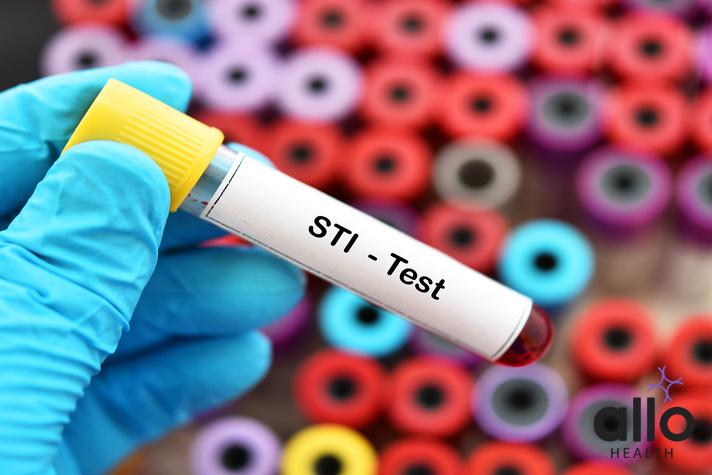How Is Mycoplasma Genitalium (MG) Diagnosed?

Allo Health is dedicated to personalized well-being, offering support and trusted information tailored to individual health goals. The platform emphasizes human-generated content, led by a distinguished medical team of experts, including physicians and sexual health specialists. Their commitment to credibility involves rigorous fact-checking, authoritative research, and continuous updates to ensure accurate, up-to-date information. Allo Health's unique approach goes beyond conventional platforms, providing expert-led insights and a continuous commitment to excellence, with user feedback playing a crucial role in shaping the platform's authoritative voice.

Dr Sanina Mansoor holds MBBS degree from Yenepoya university,Mangalore.She has 8 years of experience working as a medical officer at various health centres and medical colleges.
Why This Was Upated?
Our experts continually monitor the health and wellness space, and we update our articles when new information became available.
Updated on 26 February, 2025
- Article was updated as part of our commitment to diversity, equity, and inclusion.

"The following blog article provides general information and insights on various topics. However, it is important to note that the information presented is not intended as professional advice in any specific field or area. The content of this blog is for general educational and informational purposes only.
Book consultation
The content should not be interpreted as endorsement, recommendation, or guarantee of any product, service, or information mentioned. Readers are solely responsible for the decisions and actions they take based on the information provided in this blog. It is essential to exercise individual judgment, critical thinking, and personal responsibility when applying or implementing any information or suggestions discussed in the blog."
Mycoplasma genitalium (MG) is a bacterium that can cause sexually transmitted infections (STIs) in humans. Diagnosing MG involves a series of steps to confirm the presence of the bacterium and to differentiate it from other STIs or non-infectious conditions. Here’s an in-depth look at how MG is diagnosed.
Clinical Assessment
- Symptoms Evaluation:

MG infections often present with symptoms similar to other STIs, such as urethritis (inflammation of the urethra), cervicitis (inflammation of the cervix), and pelvic inflammatory disease (PID) in women. Symptoms may include:- Urethral discharge or burning during urination.
- Vaginal discharge or bleeding between periods.
- Pelvic pain or discomfort.
- Painful intercourse.
- In men, inflammation of the epididymis (epididymitis) or prostatitis.
- Medical History: A detailed history of sexual activity, previous STIs, and any recent symptoms is crucial for clinical assessment.
Physical Examination
- Genital Examination: Visual inspection of the genital area may reveal signs of inflammation, discharge, or other abnormalities suggestive of an STI.
Laboratory Tests
- Nucleic Acid Amplification Tests (NAATs): These tests are the primary method for diagnosing MG due to the bacterium’s fastidious nature, making it difficult to culture. NAATs detect MG DNA or RNA in genital samples, such as urine, vaginal swabs, cervical swabs, or urethral swabs.
- Polymerase Chain Reaction (PCR): PCR is a commonly used NAAT that amplifies and detects specific DNA sequences of MG.
- Transcription-Mediated Amplification (TMA): TMA is another sensitive NAAT that amplifies and detects MG RNA, offering high specificity.
- Sample Collection:

Proper collection of genital samples is crucial for accurate test results. This may involve urine collection for both men and women or swabs from the urethra, cervix, or vagina depending on the individual’s symptoms and gender. - Testing Guidelines: Testing for MG is recommended in individuals with symptoms of urethritis, cervicitis, PID, or proctitis (inflammation of the rectum) that are unresponsive to standard STI treatments. Asymptomatic individuals with high-risk sexual behavior or partners with MG should also be tested.
- Co-Infections Screening: Since MG can coexist with other STIs like Chlamydia trachomatis and Neisseria gonorrhoeae, simultaneous testing for these infections is often recommended.
- Laboratory Confirmation: Positive NAAT results confirm the presence of MG. However, false positives are possible, necessitating clinical correlation with symptoms and possibly repeat testing for confirmation.
Additional Tests
- Antibiotic Susceptibility Testing: In cases of confirmed MG infection, antibiotic susceptibility testing may be performed to guide treatment, as MG has shown resistance to certain antibiotics like macrolides and fluoroquinolones.
- Follow-Up Testing: After treatment, follow-up NAATs may be recommended to ensure clearance of the infection, especially in cases of persistent or recurrent symptoms.
Considerations for Treatment and Management
- Partner Notification: Positive MG results should prompt partner notification and testing to prevent reinfection and spread of the bacterium.
- Treatment: MG infections are typically treated with antibiotics such as azithromycin or moxifloxacin, guided by antibiotic susceptibility testing if available. Compliance with prescribed antibiotic regimens is essential to achieve successful treatment outcomes.
- Follow-Up Care: Follow-up visits to monitor treatment response, assess for complications, and perform post-treatment testing are important for comprehensive management.
Diagnosing Mycoplasma genitalium (MG) involves a comprehensive approach that includes clinical assessment, laboratory testing using nucleic acid amplification tests (NAATs), consideration of antibiotic susceptibility, and follow-up care. Timely and accurate diagnosis is crucial for effective management, including targeted antibiotic therapy and preventive measures to curb transmission. Partner notification and testing play a significant role in controlling the spread of MG and reducing the burden of associated complications.








































